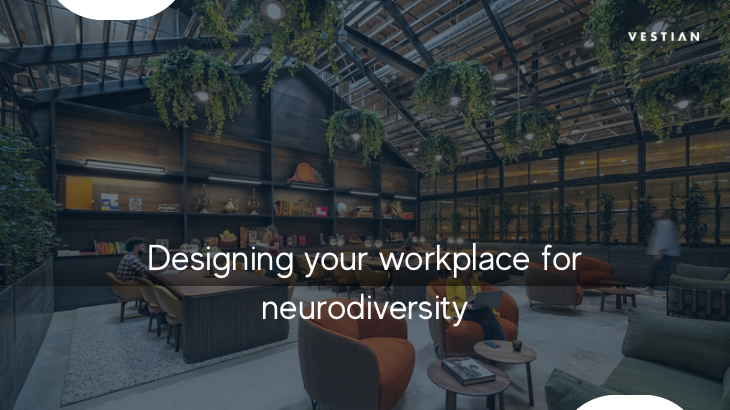Neurodiversity refers to a range of differences between people’s brain function and personality traits.
According to studies, approximately 15-20% of people at the workplace are neurodivergent, meaning 15 to 20% of the workforce fall in the autism, attention deficit hyperactivity or dyslexic spectrum. The rest of the workforce falls in the neurotypical spectrum.
The sea change in how one works has led to a similar change in the approach to workplace design. Gone are the days of one size fits all or a cookie cutter mentality. Workplaces are being customized and curated. We see organisations moving away from traditional designs and creating a wide range of “I” and “me” spaces within the workplace that offer employees the freedom to choose from where and how they would like to work. The focus is on creating a more supportive, collaborative and engaging environment that meets the needs of all employees and enhances the experience of the workplace.
To design an inclusive workplace that also caters to neurodiverse employees, requires a more nuanced approach Human centric approach to design allows for accommodating a broader spectrum of needs. While sensitizing the workplace to the diverse needs of employees, ideal would be to start on the drawing board. But if that is not the case and budget does not permit presently, making minor adjustments at the workplace, will also go a long way to cater to the needs of the neurodivergent populace and generally make the workplace more accessible to all. Organisations will be able to leverage their unique skill set and create a more inclusive workplace.
So, how do we go about enhancing the sensory experience at the workplace and making it supportive for all employees?
Workplaces can often get very noisy and thus, auditory stimulation can be challenging for employees, especially for neurodivergent employees. Several research indicates that a noisy work environment decreases employees’ accuracy to focus by 67%, be it neurodivergent or otherwise. Thus, to dampen noise, designers have started to build with materials that better help in controlling sound at the workplace. Materials like acoustic flooring, soundproof windows, doors, acoustic panels, acoustic fabrics and acoustic foams can be added to the workplace design to absorb sound. Infact walls and partitions can also be added to provide acoustic baffling, that in turn would also provide the necessary privacy at an open workplace.
Bringing the outdoor indoors
Biophilia has been gaining popularity over the years and we have seen many organisations incorporating biophilic elements in their workspaces. Biophilic design is not just about plants and greenery, it is also the use of natural materials. It allows humans to not only be around nature, but use it to preserve physical, spiritual, and mental health, and well-being. Adding greenery to the workplace improves ventilation, allows natural light to flow into the workplace and use of natural materials like wood and stones, lead to higher productivity, reduce absenteeism and uplift the mood of people at the workplace.
Providing a variety of spaces
A neurodivergent individual, in particular, requires a break from sensory overload. They experience and feel the environment more acutely than most of the other employees. Thus, the need is to create an environment that is responsive and conducive to the needs of neurodivergent employees. Organisations must look at providing the flexibility to employees to work in an environment that works best for each of the individual. This is apart from creating wellness corners or quiet rooms that can provide the much-needed respite to employees to recharge and get back to work. While building these wellness corners and rooms, the solution shouldn’t be just building four walls and detaching the employees from the outer world, the space should include inclusive lighting, color, sound, and amenity choices. Use of warm, neutral colors to promote calmness and dedicated area that includes natural light which can be less stressful than artificial sources is also something that should be factored in. Also, find a way to unclutter the space.
As organisations seek to create a more versatile environment that provides a range of preferences suiting the needs of every employee, being cognizant of the diverse employee pool, include neurodiverse population will help them better plan, prepare and execute changes. Neurodiversity, like all forms of diversity, is considered a hugely positive addition to the workplace. An inclusive organization is one that embraces and nurtures the uniqueness of its employees.
